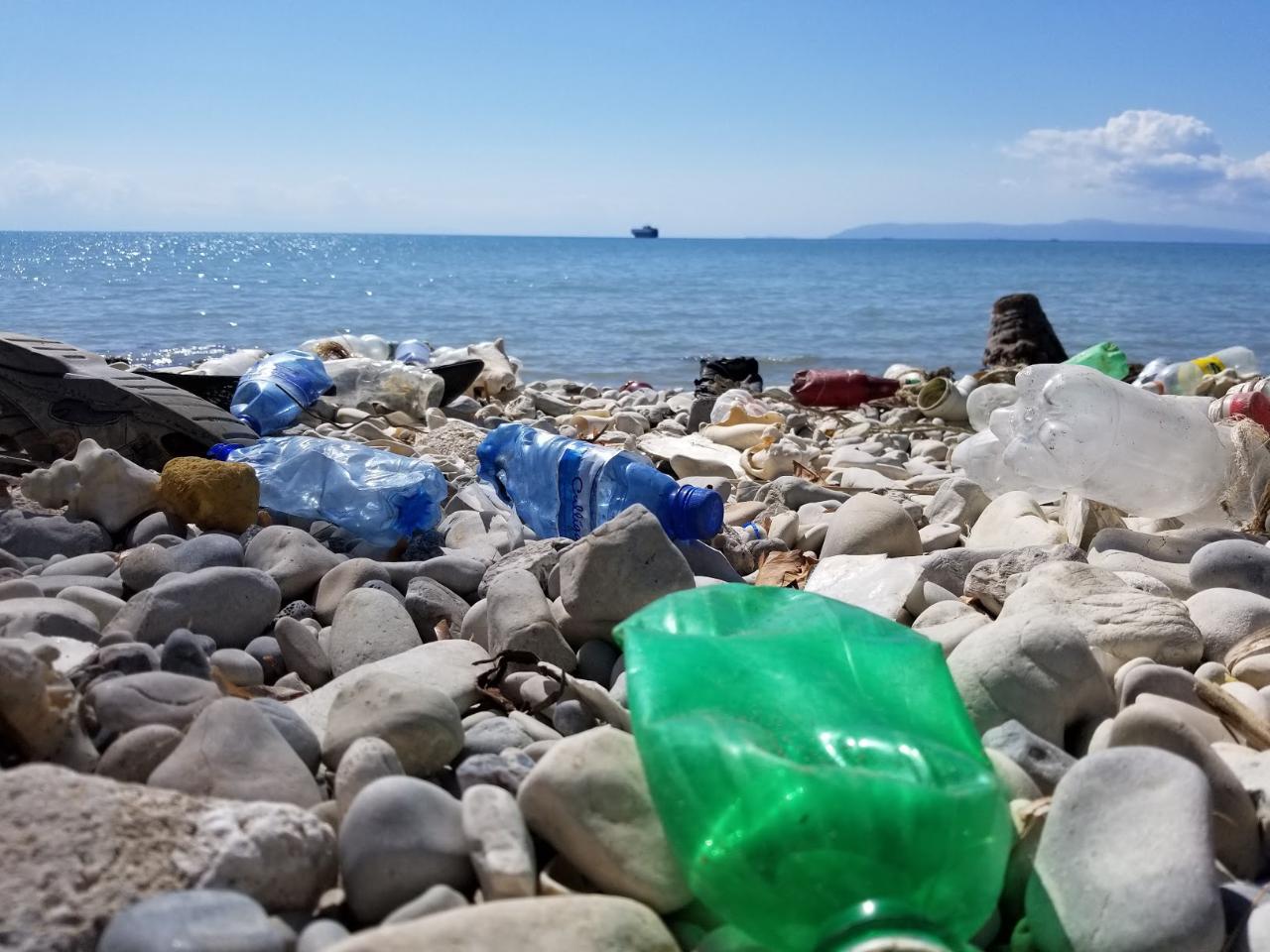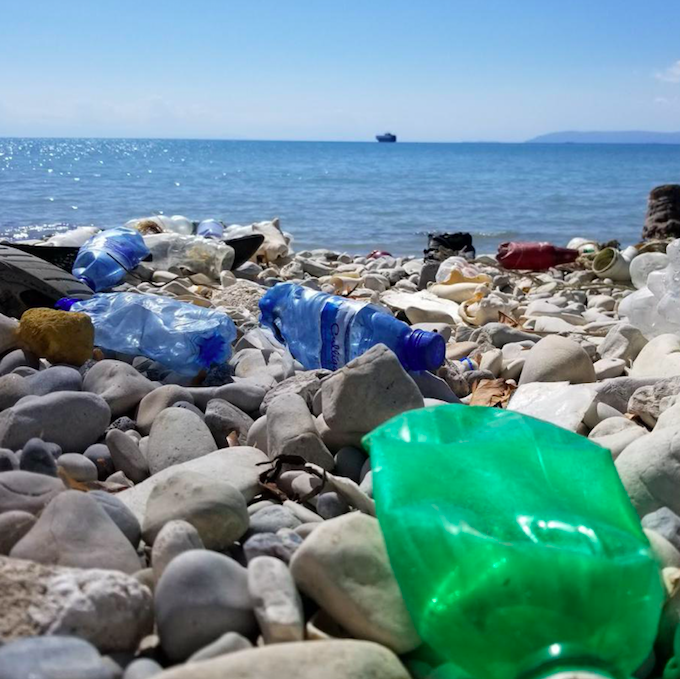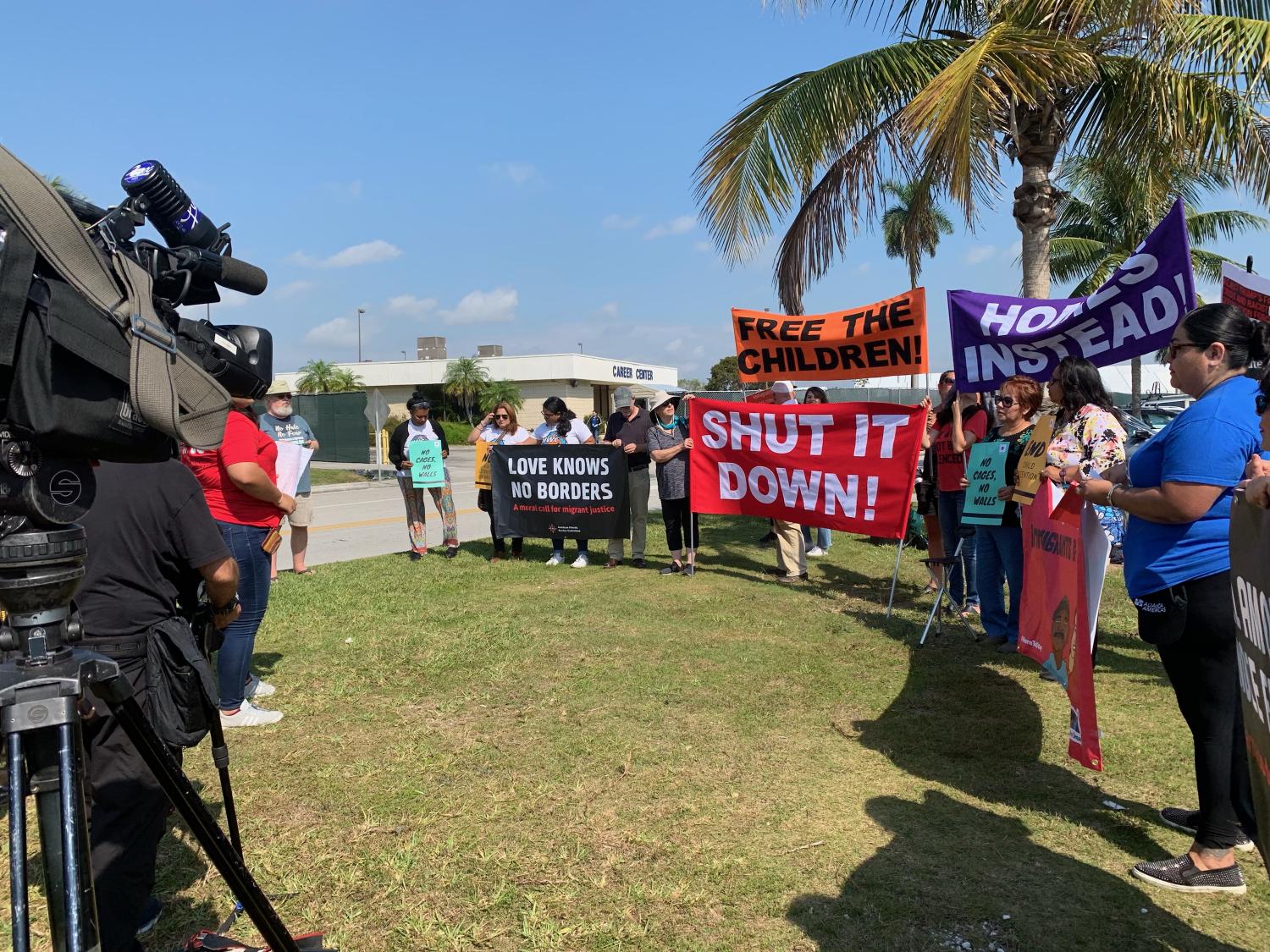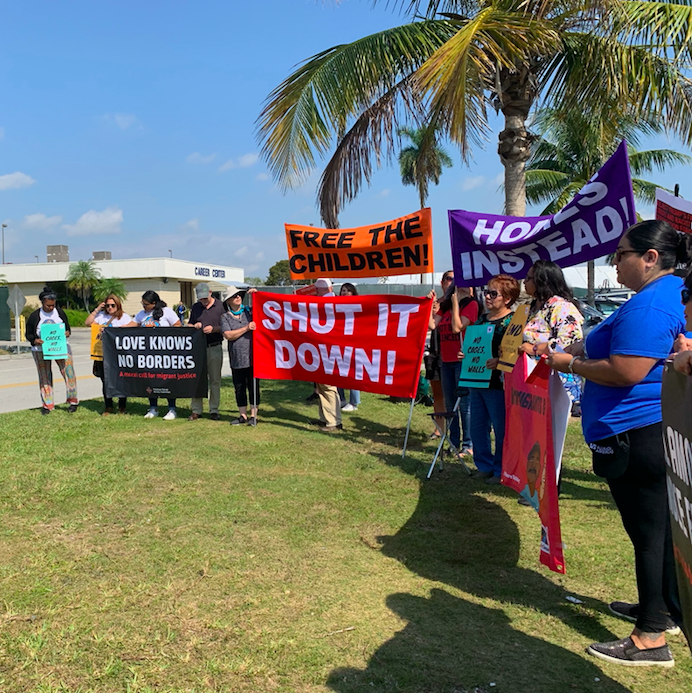AI Risks Cause Police Body Camera Manufacturer Axon to Pause


With companies announcing new artificial intelligence (AI) products nearly every day, Axon—the largest manufacturer of police body cameras—is saying, not so fast.
Last week, the company announced it will not be commercializing face-matching products on its body cameras, at least not at this time. Axon CEO Rick Smith said the decision was based on the recommendation of Axon’s AI and Policing Technology Ethics Board, which concluded that face recognition technology is not yet reliable enough to justify its use on body-worn cameras. The board expressed particular concern regarding evidence of unequal and unreliable performance across races, ethnicities, genders and other identity groups.
Facial recognition is a category of biometric software that maps an individual's facial features mathematically and stores the data as a faceprint. The software uses deep-learning algorithms to compare a live capture or digital image to the stored faceprint in order to verify an individual's identity.
AI software in law enforcement has raised particular privacy concerns and the risk of inherent bias.
Axon’s Ethics Board, which operates independently from the company, cautioned that face recognition technology should not be deployed until the technology performs with far greater accuracy and performs equally well across races, ethnicities, genders, and other identity groups. It said in its report to Axon leadership, “Whether face recognition on body-worn cameras can ever be ethically justifiable is an issue the Board has begun to discuss, and will take up again if and when these prerequisites are met.”
Axon shows that responsible AI is possible
The decision by Axon to not commercialize the technology shows that business can act responsibly, using independent input to weigh the risks of AI against its potential revenue-earning benefits.
"We made the decision that just because you could deploy a certain technology does not make it right," Mike Wagers, Axon vice president of emerging markets, told NPR last week.
The company believes face-matching technology deserves further research to better understand and solve for the key issues identified in the report, including evaluating ways to de-bias algorithms. It says it will continue to evaluate the state of face recognition technologies and will keep the board informed. The company has also committed to publish a formal ethical framework later this year that will outline how ethical considerations are integrated into its product development efforts.
Axon sees benefits of AI
While Axon has paused on face-matching software, AI already plays a central role in many of Axon’s products and services, used by more than 4 million law enforcement officers around the world. Moji Solgi, Axon director of AI and machine learning, says the technology provides an effective set of tools for public safety officers to do more and have better access to crucial information and real-time safety measures.
One example where Solgi sees AI making a difference is in the Los Angeles Police Department, which uses Axon’s artificial intelligence software to categorize video footage captured by police body cameras. The software is meant to reduce the amount of time it takes officers to review, analyze and categorize body camera footage. The software does not have facial recognition technology, and it will not make decisions on police interactions, crimes or other subjective issues.
Most body camera videos are an hour long, but on average, only 15 minutes shows an incident that requires officers to review. Axon’s software will label chunks of footage that officers need to review and other chunks as unnecessary to view. This will redirect officer's time and help them not waste hours watching inconsequential parts of the video, an Axon spoke person told Inc.
Daniel Gomez, a sergeant in the LAPD, agreed. "In the past year alone, we have accumulated more than 33 years' worth of video data to analyze," Gomez told Inc. "Reducing the time it takes for our staff to review footage is a priority for us so we can invest more time and energy in the field."
The long-term goal is for the software to auto-populate police reports with simple, objective facts, Axon says. One day, the software could start a police report and include simple facts, like the make and color of a car involved in a robbery, so the officer can focus on more complex aspects of a crime.
Solgi says the company will continue to take ethical considerations seriously as it develops the software:
“We do our AI development while keeping the ethical aspects front and center to every step of the process—from data collection to model training, inference, evaluation, and interpretation of the results. We ensure that there is always a human-in-the-loop to make the final judgments whenever there might be a risk of impinging upon privacy or civil rights.”
Creating an industry precedent
As AI continues to take the world by storm, it is imperative for business to lead by example, examining the inherent risks and asking if the technology has evolved far enough to safeguard against potential pitfalls. Companies that fail to do this will risk eroding public and customer trust—which could be the biggest risk of all.
Axon CEO Smith agrees. “Outside ethical advisory boards are a new concept among technology companies, and we are proud to embrace it and design an ethical roadmap that we hope other companies can emulate.”
Image credit: Axon/Facebook
Life After Coal: Why Renewable Energy Needs to Try Harder


One chart says it all—or does it? Last week, wind and solar power advocates cheered when the U.S. Energy Information Agency posted a chart showing that renewable energy beat coal for electricity generation in April. That marked a historic reversal of fortune for coal. However, the battle to decarbonize the nation’s electricity profile is still far from over. There are some red flags hidden behind the EIA chart—and many opportunities for businesses to push the renewable energy envelope.
Natural gas and the decline of coal
The EIA chart traces the rise of renewable energy and the decline of coal since 2005. That’s not quite the same as renewable energy replacing coal, as EIA makes abundantly clear elsewhere in its reporting.
One significant factor not included in the new chart is competition from natural gas. EIA and other energy observers credit a flood of low-cost natural gas as the main driver of coal’s decline in the electricity generation sector.
Coincidently or not, the starting point of the chart—2005—marks the beginning of the ongoing natural gas fracking boom in the U.S. Low-cost natural gas began flooding the market after the George W. Bush administration loosened federal water safety regulations through the “Halliburton Loophole” of 2005.
Hydropower and the rise of renewable energy
Wind and solar fans have another reason to take caution when interpreting the new EIA chart. That’s because wind and solar are not the only resources EIA includes in the renewable energy category. In this chart, the agency includes hydropower among other renewable resources.
That’s important because hydropower is not a “new” renewable energy resource. Unlike modern wind and solar technology, hydropower has been a major part of the U.S. electricity landscape for almost a century, especially after the rural electrification programs of the 1930s.
In 2018, hydropower still accounted for 41 percent of U.S. renewable electricity production. That’s impressive, but unfortunately there is limited space for hydropower to grow in the U.S.
Overall hydropower production may increase somewhat as older facilities are upgraded, including the addition of energy storage features. However, its ability to accelerate the zero-emission trend will be limited.
That’s because the construction of large new hydropower facilities in the U.S. is unlikely, due to ecosystem impacts associated with dams and turbines. In addition, the upgrading of some facilities may be counterbalanced by environmental restoration projects that take others offline.
In other words, U.S. businesses can’t continue to rely on hydropower for stepping up the pace of the clean energy transition.
Wind power to the rescue
One big, bright spot on the horizon is the rapid pace of U.S. wind energy development. Last year, wind accounted for about 39 percent of total renewable electricity generation in the U.S., which means that it is closing in on hydropower.
Wind power is poised for another surge with a torrent of new offshore wind projects now in the pipeline along the Atlantic coast. Conditions on the Pacific coast make offshore development more challenging there, but new floating wind turbine technology is providing the means to overcome the obstacles.
When a boost in cleantech means more natural gas
All of this circles back to the continued role of natural gas in U.S. electricity generation. Despite a surge of activity in the renewable electricity field, EIA anticipates that electricity generation from natural gas power plants will increase, not decrease, in the coming years.
Utility-scale natural gas power plants accounted for 35 percent of U.S. power generation 2018. According to EIA, that will increase to 37 percent by 2020.
All else being equal, one reason to expect an increase in electricity from natural gas is the user end of clean technology. Electric vehicles and the related field of renewable hydrogen (produced by “splitting” water with electricity) will account for an increase in demand for electricity over the coming years.
Efforts to wean buildings from dependency on diesel fuel and natural gas will also have a consequential impact on overall demand for electricity. The building electrification effort is an expansive one that covers commercial and industrial users as well as millions of residential buildings, where gas is used for multiple household appliances.
U.S. businesses can lead on real decarbonization
Overall, electric vehicles and the building electrification movement will help reduce emissions from buildings and vehicles. However, the continued reliance on natural gas for electricity involves other impacts that cover a lot of other ground.
Evidence is growing that links natural gas drilling to air, water and public health impacts in local communities, exposing businesses to environmental justice issues as well as broader corporate social responsibility issues.
In addition, methane leakage all along the supply chain calls into question the idea that natural gas really is “clean” enough to make a difference in the effort to avert catastrophic climate change.
In sum, the new EIA chart does not mark the end of an era. It signals that there is still an urgent need for businesses to step up the demand for new wind and solar technologies that ensure a more sustainable future.
Image credit: American Public Power Association/Unsplash
StubHub Finds a Way to Give Back by Giving Experiences


Everyone loves the anticipation and excitement of purchasing tickets to their favorite live show or event, but what if those tickets just do not fit into next month’s (or any month’s) budget? StubHub, owned by eBay, has become the go-to platform for buying and selling tickets to live sports, concerts, theater shows and other events. Similar to eBay, buyers can choose among competing offers from various sellers. As ABC once reported, StubHub “has become the ticket scalper of the digital age.” The service’s community forum engages visitors with updates on new events and sellers, and it contains a Fan Protect Guarantee to ensure the validity of all sales.
Now, StubHub has taken its adage that “joy is at the root of every StubHub experience” to an entirely new level. Recently, the company launched the #TicketForward social media campaign in a drive to grant anyone the experience of attending a live event, irrespective of their ability to pay. The program is focused on those with serious health challenges like the mission of the Make-A-Wish Foundation. In this shared spirit of giving, and with the added declaration that StubHub believes that “live events change lives,” the company collaborated with Make-A-Wish as its first #TicketForward partner. Through the program, anyone in the U.S. and Canada can nominate someone who inspires them to attend a live event of their choice.
This is a compelling decision by a company which, after building a following of enthusiastic ticket-seekers, has found another opportunity to do business while creating social good. The argument for making the business case for sustainability includes leveraging social impact to bolster a company’s bottom line. StubHub recognizes that happy, healthy, fulfilled people in communities drive prosperity. Science has shown that happy and healthy individuals contribute more to society, and in numerous indirect ways bolster all of our lives through their actions.
StubHub has arguably taken the relevance of the Human Happiness Index and World Happiness report and integrated it into its mission and business model. Published by the United Nations Sustainable Development Solutions Network, the report measures the state of happiness around the world. From the perspective of making the case for business sustainability, StubHub is betting that creating a platform to allow their followers to spread more joy, by nominating deserving individuals in their community to attend a live event, will bring more traffic to their site. And the brand is right about this. Allowing more people to attend live events can spread camaraderie, excitement and human sharing on a more profound level to those who do not have access to such events.
Another interesting metric that aligns with StubHub’s mission is the Happy Planet Index. Created by the New Economics Foundation in the United Kingdom, its goal is to promote social, environmental, and economic justice and well-being for people around the world. It’s clear StubHub is meeting the well-being pillar that comprises this index.
To that end, there is no better industry that can spread happiness around than the entertainment and sports sectors. StubHub’s efforts are in lockstep with other companies in the entertainment industry that are harnessing their products to boost social good. Disney, for example, manages several programs that reach out to critically ill children. The owner of the Los Angeles Kings hockey franchise, AEG, has worked with its players to visit child patients in southern California. Finally, similar to how StubHub is granting access to its events, 21st Century Fox has opened its shows to screenings by various youth organizations.
Image credit: Aditya Chinchure/Unsplash
HP Takes the Circular Economy to the Next Level


For a company that has been recycling its hardware and toner cartridges since the 1980s, moving to a circular economy was not that big of a leap for printer and personal computer leader HP Inc. Now the company says it is determined to build new, circular supply chains and lead the industry on incorporating post-consumer plastic in its products and keep that waste out of the oceans.
“Our commitment to the circular economy stretches back a really long time,” Nate Hurst, Chief Sustainability and Social Impact Officer at HP Inc., told TriplePundit. “Long before recycling became mainstream, we were thinking with that mindset. Our engineers get very excited about the circular economy and want to be leaders in this space.”
Hurst pointed out that 27 years ago, the company established its Planet Partners Program, a product return and recycling program now available in 47 countries worldwide. Through 2018, according to its recently released 2018 “Sustainable Impact” Report, HP has manufactured over 4.2 billion HP ink and toner cartridges using more than a cumulative 107,000 metric tons of recycled plastic.
This effort, according to the company, has kept 830 million HP cartridges and an estimated 101 million apparel hangers and 4.37 billion post-consumer plastic bottles out of landfills; instead, HP says it is now upcycling these materials for continued use.
More than 80 percent of “Original” HP ink cartridges contain 45 percent to 70 percent post-consumer recycled content, and 100 percent of these HP toner cartridges contain five percent to 45 percent post-consumer or post-industrial recycled content. The company has pledged to increased recycled content in its personal computing systems and print hardware supplies to 30 percent by 2025.
Disruption is at the heart of HP’s approach
HP’s approach focuses on three aspects, Hurst explained. First, decouple growth from consumption and find solutions that use less resources, where the materials can be used at the highest value for the longest possible time, and where the products can be repurposed at the end of their life cycles.
Second, he continued, is “disrupting industry models, creating more of a service model, such as our managed print and device services, subscription-based services to ensure resources are not wasted. We can swap out to the latest technology to get the most energy efficient use out of that product. We help customers extend the life of the product, limit its energy use and make sure that recycling and refurbishment happens.”
Another example, Hurst said, are the HP Instant Ink printing plans, which help home users and microbusinesses in 18 countries remain productive by ensuring they never run out of ink. The service anticipates when ink is running low and sends replenishments and new recycling envelopes straight to customers’ doors. Customers save up to 50 percent on ink while decreasing the carbon footprint of ink purchase and disposal by 84 percent, reducing energy use by 86 percent, and lowering water usage by 89 percent, according to HP’s most recent sustainability report.
A circular economy boost for Haiti and ocean plastic recycling
The third leg of the circular economy approach, he added, is collaboration with partners and customers to create new circular economy models. As one example, in 2016 HP began partnering with the First Mile Coalition to actively reduce ocean-bound plastic in Haiti by converting plastic bottles into recycled material used in HP ink cartridges. These efforts have already diverted approximately 716,000 pounds of plastic materials—or more than 25 million bottles—preventing this plastic from reaching waterways and oceans and instead, repurposed into HP cartridges.
In April, HP announced a $2 million investment in a plastic washing line in Haiti to expand the company’s ocean-bound plastic supply chain. This new facility will allow HP to produce cleaner, higher quality recycled plastic locally for use in the company’s products. The initiative is also expected to create more than 1,000 new income opportunities locally, according to HP.
“We didn’t have to source from a very poor country with very limited infrastructure like Haiti,” Hurst explains, “but if we are going to live true to our purpose-- to create technology that makes life better for everyone everywhere—we have to figure out ways to source from economies that haven’t quite emerged yet, where we might create a real market-based and sustainable system that could have an impact for a country like Haiti –a greater impact than just writing a check in the aftermath of a natural disaster.”
Sustainability - a $900 million contribution to new revenue for HP
The numbers speak to the success of HP’s approach, according to Hurst. HP’s sustainability programs drove more than $900 million of new revenue, a 35 percent increase from the previous year.
“That’s real bottom line growth as we lean into sustainable impact more and more,” Hurst said. “That allows you to have a different conversation with consumers and with the Board.”
“Customers no longer want to have a tradeoff between buying a product that can have a sustainable impact or a good price and quality; they kind of expect all of that. Because we’ve been at it awhile, that’s our mantra. What’s good for the environment in the long term is good for business.”
Image credit: HP
Old Navy Makes Purple Patriotic for a Good Cause


“Old Navy is turning the big 2-5, and like any good millennial, we’re celebrating for a whole month!”
With this tweet, fashion retailer Old Navy recently kicked off not only its month-long birthday celebration, but also its #BelongingLooksLike campaign. And in true millennial fashion, this campaign includes nostalgia, social media influencers, matching T-shirts, and a call for businesses to take a stand on social and political issues.
So far, the most publicized part of the #BelongingLooksLike campaign has been, well, purple. Old Navy’s logo – both online and outside the Times Square flagship store – has temporarily changed from dark blue to purple. And on June 25, Old Navy released a purple version of its annual $5 flag T-shirts. For many families during the 1990’s and 2000’s, the matching white T-shirts were as much a part of the Fourth of July as fireworks and barbeques. The limited-edition purple 2019 version (also $5) features the traditional American flag image and the phrase “25 years of belonging” on the front, and a message on the back explaining “Why Purple?”. (The simple answer: “Purple is what you get when you bring red, white and blue together.”)
Within 24 hours, all 1,994 purple shirts (a nod to Old Navy’s founding in 1994) were sold out, after social media influencers like Queer Eye’s Karamo Brown featured the shirt on platforms like Instagram. As of June 27, Old Navy’s website had replaced the page to buy the shirts with a pop-up shop offering a variety of other purple items customers could purchase instead.
But #BelongingLooksLike extends beyond the purple logos and shirts. As Old Navy president and CEO Sonia Syngal explained in an op-ed on Fortune:
“We knew the best way to celebrate our brand . . . is through our commitment to belonging. Since 1994, we’ve set out to democratize style. To us, that means everyone is welcome and should feel like they belong the moment they enter our stores, try on our clothes, and experience the Old Navy brand. No customer is the same as any other, and that’s exactly as it should be.”
As part of #BelongingLooksLike, Old Navy says it is donating $25,000 to Open to All, a public engagement campaign that seeks “to build awareness and understanding about the importance of strengthening our nation’s nondiscrimination laws—and to defend the bedrock principle that when businesses open their doors to the public, they should be Open to All.”
Open to All was created as a response to the 2018 U.S. Supreme Court case Masterpiece Cakeshop vs. Colorado Civil Rights Commission. While that specific case dealt with discrimination based on a customer’s sexual orientation, Open to All and its advocacy efforts also cover discrimination based on race, ethnicity, immigration status, disability, religion, gender, and more. Today, more than 5,000 corporations, small businesses, non-profits, government organizations and politicians have taken the pledge to be Open to All. Old Navy was one of Open to All’s founding business members, and is the first retailer to extend Open to All’s pledge to Mexico and Canada.
Unsurprisingly, even a cause as seemingly non-divisive as “belonging” has stirred up some criticism of Old Navy. Some people have pointed out the timing of this campaign, considering the racial profile accusations against a Canadian Old Navy store earlier this month. Others have found issue in the omission of the words “under God” and the replacement of “justice” with “fun” in the phrase “One nation, indivisible, with liberty and fun for all” on the purple T-shirts and the Old Navy website. And people on Old Navy’s Facebook page have commented on the irony of a “limited edition” shirt meant to celebrate inclusivity.
While the #BelongingLooksLike campaign may have some flaws, its central messages of unity and nondiscrimination are much needed in today’s social and political climate. For more information on how you can spread the word about the Open to All pledge, click here.
Image credit: Old Navy
More Legacy Companies Are Acquiring Purpose-Driven Startups: Here’s How To Do It Right


Around 70 percent of U.S. consumers say they’d rather buy from environmentally-friendly and socially-conscious companies, according to market research published in January. As people continue to gravitate toward sustainable brands, the legacy companies that once dominated the consumer goods segment are in a race to shake up their product portfolios and compete with purpose-driven startups.
Along with launching new products, many companies are looking to meet consumer demand by acquiring smaller, sustainable and health-focused brands. CDP recently analyzed 16 of the largest publicly-listed consumer goods companies—and it found that 75 percent of them have acquired a niche, environmental brand over the past five years. This type of activity has more than quadrupled over that time, with recent examples including Nestlé’s acquisition of Sweet Earth and PepsiCo’s purchase of Bare Foods.
When it comes to mergers and acquisitions, loyal customers of purpose-driven brands often imagine the worst: A corporate behemoth comes along, gobbles up its smaller competitors, and transforms them into clones of its already-established brands. But when done right, these partnerships can be a boon for niche brands, as well as their parent companies and society at large.
In short: Multinational corporations have access to capital, not to mention a vast network of packaging and transportation infrastructure, as well as more placement on store shelves. When given access to these resources while maintaining their missions, social impact companies can bring their visions to scale—and introduce their products to more customers.
On the flip side, by acquiring niche brands, large parent companies not only add new products to their portfolios, but also have an opportunity to learn about social impact and sustainability from upstarts with purpose at their core.
Case study: Happy Family Organics thrives under parent company Danone
Danone acquired Happy Family Organics, which specializes in organic baby food, for an undisclosed sum back in 2013. This story of a niche brand joining a major multinational is one of mutual learning, and it offers a case study of M&A done right.
Case in point: Happy Family was the first certified B Corp to join the French multinational. Within five years, Danone’s North American arm became the largest B Corp in the world. “We feel proud, because we view ourselves as inspiration for that,” said Anne Laraway, CEO of Happy Family. “We are gaining a lot from the benefit of having Danone as our parent company, but we're also inspiring them in a few ways that are really meaningful and I think this is one of them.”
In this case, the learning goes both ways. “They've also inspired us,” Laraway said.
For example, last year Danone committed to adopt circular packaging, pledging to ensure all product packaging is reusable, recyclable or compostable by 2025. Happy Family was founded with sustainability at its center—with a driving purpose to “change the trajectory of children’s health through nutrition” by prioritizing traceable, organic ingredients. But recyclability in packaging is something of an Achilles’ heel for the upstart brand.
One of the company’s key innovations is a lightweight plastic pouch that replaces glass baby food jars. The pouch reduces environmental impact at the front end—it uses less material and is much lighter, reducing manufacturing- and shipping-related emissions. (Not to mention it’s easier for busy parents to toss in a diaper bag.) But at the back end, the pouch is not recyclable, representing a key sustainability challenge for the company.
“We've always had sustainability initiatives built into who we are as a company. But having that commitment by our parent has really allowed us to put a stake in the ground [around packaging] and make a public commitment ourselves,” Laraway told us. Happy Family signed on to Danone’s circularity commitment earlier this year.
“There's a lot of work to be done from an infrastructure perspective, finding end-of-life solutions for our packaging,” Laraway said. “But we have a lot of energy as a company going behind it. Ultimately, if you have the health of children as your guiding light, you have to leave them with a planet that's healthy.”
Collaboration between brands drives sustainability forward
Soil is a natural carbon sink with the potential to fight climate change, but degradation associated with large-scale farming has released 50 to 80 percent of the carbon once stored in soil, Nexus Media reports. Returning to our proverbial roots through time-honored farming practices like cover crops, crop rotations, and livestock grazing can help reverse that trend and ramp up carbon sequestration in the soil, a model referred to as regenerative agriculture.
With agricultural supply chains that stretch around the world, food companies can play a key role in driving regenerative agriculture forward. Both Danone and Happy Family are looking into this—and their work could have lasting impacts that stretch far beyond their own four walls.
“We have been organic since day one and we know organic has a number of benefits for human health and the planet, but we also see some opportunities to go even further,” said Katie Clark, director of sustainability for Happy Family. “We're trying to explore the ways that we as an organic brand can help the farmers in our supply chain feel supported and be more successful.”
In 2018, Happy Family launched a regenerative agriculture pilot program with two supplier farmers in Michigan and Argentina, with promising early results. The company is looking to expand the pilot to farms in Chile this year and eventually to more farmers in its supply chain. Likewise, Danone North America launched a soil health initiative in 2018 and is paving the way for regenerative agriculture in the dairy sector by leading seven food-industry players in the Farming for Generations alliance.
We’ve already seen the impact that parent-brand collaboration can have on regenerative ag: Earlier this year, General Mills announced plans to convert 34,000 acres in South Dakota from conventional to certified organic farmland, creating one of the largest contiguous organic farms in the U.S. that will grow wheat for its Annie’s Homegrown brand. Through projects like this, General Mills is committed to advance regenerative agriculture practices on 1 million acres of farmland by 2030.
Can M&A win the day?
Of course, not all parent-brand integrations are seamless—the market is littered with casualties of M&A gone wrong. But when niche brands are able to maintain their driving purpose and culture—while illuminating areas of learning between parent and brand—both companies can be better off for it. "It's definitely a give and take," Laraway said of Happy Family's integration with Danone. "And I feel really lucky, because I know that's not how it always is. Ultimately, we feel very aligned and like we found a good partner."
Image credits: Happy Family Organics via Facebook
Bank of America Finally Says No to Private Prisons


Bank of America has become the latest in a growing line of companies responding to the President’s immigration treatment on a bottom-line basis. Instead of tactics such as simply withdrawing advertising support from media organizations, these companies are demanding better behavior from their clients with a more direct form of punishment. For Bank of America and other leading financial institutions in the U.S., that means ending any financial support for the private prison and detention companies CoreCivic and GEO Group.
Brand reputation and the maltreatment of immigrants
President Trump’s policies on immigration and his administration’s treatment of immigrants have been scalding controversies ever since he took office in January 2017. A number of leading companies publicly protested his policies from the start. They have continued to speak out, partly in response to prompting from their employees.
Microsoft and other companies also stepped up the pace of resistance by contributing to or bringing legal action meant to block the President’s orders.
The Bank of America decision represents yet another level of corporate activism.
With brand reputation at stake, the bank, as well as other companies, are setting a higher standard for their business relationships.
The reputational concern is a legitimate one, and its significance is growing with every new story about child abuse at border detention facilities.
Earlier this week, for example, the online furnishing company Wayfair was hit with a firestorm of negative media attention over its handling of an order for hundreds of mattresses and bunk beds destined for a migrant children’s detention center.
Peer pressure: from environmental leader to human rights follower
Last year, Bank of America garnered a long list of awards and recognitions as a global environmental leader.
That leadership position, somewhat ironically, proved awkward for the bank as public outcry over immigrant treatment gathered steam this year.
Two other leading U.S. banks, Wells Fargo and JPMorgan Trust, dropped their ties with CoreCivic and GEO Group in January and March, respectively. The decisions followed months of pressure from a coalition of more than 70 human rights organizations using the hashtag #FamiliesBelongTogether.
That left Bank of America as the only one of the top six U.S. banks still enabling private prisons or detention centers through a financial relationship.
The bank’s situation recalled the awkward position maintained by Sandals, which became the only high profile brand to continue advertising on Laura Ingraham’s Fox News show after Bayer cut ties.
It also exposed Bank of America to renewed criticism over an immigration-related issue that emerged last summer, when it began freezing the accounts of individual clients over their citizenship status. The practice is a common one in other countries but highly unusual among banks in the U.S.
Bank of America scrambles to protect its brand
With lessons learned from the Wayfair debacle in hand, Bank of America finally took action. Earlier this week, the bank announced through a spokesperson that it is severing ties with private prison and immigrant detention companies at the state level, in addition to federal facilities.
According to a report in CNN, Bank of America was careful not to repeat the mistakes made by Wayfair. After discussions with the affected clients, the bank determined that a lack of “legal and policy clarity,” in combination with employee and community concerns, made it impossible to continue the relationships.
Events unfolding over the past few days have demonstrated that the decision most likely diffused what otherwise could have been a significant blow to the bank’s reputation. In fact, it seems that Bank of America has dodged a reputational bullet, as media attention has zeroed in on the Homestead detention facility near Miami, Florida. The facility is run by a current Bank of America client called Caliburn.
As reported by CNN and The Miami Herald, Homestead (shown above) does not describe itself as a prison, but “protesters say it functions as one. The minors held inside are not allowed to leave.”
When “satisfactory" is not good enough
Though a latecomer to the immigration debate compared to competitors such as Wells Fargo and JPMorgan Chase, Bank of America has added another important element to the business response over the President’s immigration policies.
According to the report in CNN, Bank of America made it clear that the clients in question had met satisfactory standards for taking steps to “properly execute their contractual and humanitarian responsibilities.” Nevertheless, the bank went ahead with its decision to cut ties.
In other words, Bank of America now can say that it has set an even higher moral standard for clients seeking its financial support.
As the 2020 presidential election cycle gets underway in earnest, more likely than not other leading businesses will strive to get ahead of the immigration issue on moral grounds, before they, too, are forced to play catch-up.
Image credit: UUSC/Flickr
Wayfair Reminds Us Corporate Responsibility Doesn’t Always Come from the Top


The controversy surrounding the e-commerce company Wayfair this week should remind us why thoughtful listening to employees absolutely matters.
During a business simulation – as part of a larger business program – we were faced with a situation where we, the management team, received something poorly written, slipped under the door that was ostensibly a note from one of our “workers” advising us that there was an issue on the production line. The test was to see if we would listen or ignore the input.
While I am pleased to say our team did respond – and averted a pitfall – there was a larger lesson there; to listen to one’s employees. Indeed, when it comes to corporate responsibility, often the line-level employees have a greater insight into the thoughts and opinions in the community and see for themselves that which may not be visible from a corporate (much less a corner) office.
In a real-world example, a company was putting together its lavish annual holiday party. They approached a well-known, well-respected, well-liked administrative assistant and asked her to be on the team planning the party. Company executives considered this project to be a great opportunity to demonstrate project management skills and be highly visible to the senior executives. Instead, her manager was shocked when she declined the assignment based on the principle that the company should instead be giving the large sum of money in question to help the less fortunate in the community at that time of year.
The moral point was heard, however, and the party was indeed scaled back with the balance of the budget donated to local organizations.
The two examples demonstrate that leadership does not have to come from the top down.
Less than 24 hours ago, I posted that simple thought connected to the walkout planned by a number of employees at Wayfair, in protest of the company’s perfectly legal contract providing products to facilities being used to detain children at the southern U.S. border. That post received a great deal of views and more comments than I expected. Some were responding to the political situation, but many weighed in on whether or not it is appropriate for employees to act in this manner. Some said yes; others encouraged the employer to fire them.
In the end, however, what I was pointing out was the trend in corporate responsibility that has led to changing societal (if not legal) expectations. Today many workers - especially those who are younger – are favoring workplaces that match their personal values. Not being content to earn by day and do good afterwards, they want purpose with their paychecks.
But now this trend has given rise to this new form of employee activism; not for higher wages, or better working conditions for themselves but rather to encourage - or demand - that their employer not profit off of things that they, the employees, do not find appropriate.
Companies that fall back on quoting Milton Friedman’s famous maxim that businesses have a responsibility only maximize profits as long as it “engages in open and free competition without deception or fraud” would do well to read further in the same essay where he also stated:
“That responsibility is to conduct the business in accordance with their desires, which generally will be to make as much money as possible while conforming to their basic rules of the society, both those embodied in law and those embodied in ethical custom.”
It is that last part that people miss and, as times change, so do the expectations in society and what is considered “ethical custom.”
Image credit: Fibonacci Blue/Flickr
Highlights Magazine Talks Common Sense on Immigrant Rights


Highlights Magazine's recent response to the migrant children crisis shows how companies can take a strong stand without running into partisan politics.
As public awareness grows over the conditions migrant children in U.S. custody are enduring, leading companies have largely refrained from public comment. One notable exception is the publisher Highlights for Children, Inc. A look at the company’s response indicates how corporate citizens can take a strong stand on a matter of broad social concern without running into partisan politics.
Highlights speaks up for migrant children
Highlights posted a sharp, clearly worded statement about the border crisis on Twitter on Tuesday, using the hashtag #KeepFamiliesTogether (and this announcement, as of press time, has been trending on Twitter).
The statement, signed by Highlights CEO Kent Johnson, does not call out the Donald Trump administration by name over the president’s immigration policy.
Instead, Highlights focuses on the contrast between its mission and the conditions recently reported by visitors to one of the detention facilities.
Highlights begins by affirming that it is “a company that helps children become their best selves.” Notably, that includes encouraging children to “understand the importance of having moral courage.”
Highlights goes on to provide a common sense definition for moral courage:
“Moral courage means standing up for what we believe is right, honest, and ethical — even when it is hard.”
That sets Highlights up with a politically neutral platform. From there, denouncing the practice of separating immigrant children from their families is a simple matter of moral reasoning.
“This is not a political statement about immigration policy,” Highlights asserts. “This is a statement about human decency, plain and simple.”
Just as importantly, Highlights urges others to join the public conversation:
“We invite you — regardless of your political leanings — to join us in speaking out against family separation and to call for more humane treatment of immigrant children currently being held in detention facilities.”
Brand reputation and the border crisis
It remains to be seen if Highlights can succeed in avoiding a partisan backlash. At the very least, though, the company has accomplished one important goal. By using its voice to join the public conversation over a matter of broad public concern, the company has affirmed its corporate mission and preserved its brand reputation.
Taking a clear stand on the treatment of immigrants becomes all the more important as others begin to stake out the moral high ground.
One standout example is the online fabric arts company Ravelry. Last week, Ravelry banned users from expressing support for President Trump on their site, stating that “support for President Trump is undeniably support for white supremacy."
In another significant development this week, U.S. Citizenship and Immigration Services asylum officers are reportedly taking legal action against the Trump administration’s policy of forcing migrants to wait for their U.S. asylum hearings in Mexico.
Arguing in court that the policy puts lives at risk, the officers assert that the policy is “fundamentally contrary to the moral fabric of our Nation.”
When brands don’t take stands
In this context, the Highlights strategy presents a stark contrast to the situation of the furnishing company Wayfair.
Wayfair employees took action last week when they became aware that their company was selling hundreds of mattresses and bunk beds destined for a children’s detention facility. Last Friday, more than 500 employees signed an open letter criticizing the company’s decision to enable, support, or profit from the Trump administration’s immigration policies.
This week they followed up with a walkout demonstration at the company’s headquarters in Boston, placing Wayfair squarely in the spotlight of unfavorable media attention.
Complicity in children’s detention is clearly inconsistent with Wayfair’s mission statement on charitable giving, which reads, “we believe that a secure home is not only a basic human need but also the foundation for well-being.”
Neverthless, so far the company has refrained from criticizing the immigration policy. Instead, it asserted a bottom-line responsibility to do business with all legitimate customers, regardless of their activities or opinions.
Far from smoothing the waters, Wayfair’s response only served to keep the issue alive, and the employee group intends to keep the conversation going.
Finding the ethical center
Other high-profile companies, like Google and Amazon, are also facing employee protests over a failure to match their corporate responsibility words with actions.
They would do well to borrow a page from the Highlights book and take a close look at trends in public opinion.
In fact, they could start with Highlights. The company regularly surveys children about their concerns. Last fall it issued its 10th annual “State of the Kid” survey.
Overall, the survey indicates that “kids have a lot on their minds and they aren’t afraid to speak up.”
Highlights sums it up:
“The results, garnered on the heels of a number of significant events that saw kids standing up and speaking out like never before, are reflective of their demands for change, which made 2018 a critically important year for listening to children.”
As the immigration issue continues to dominate the public conversation, Wayfair and companies like it would be well served to listen to their employees, too.
Image credits: Highlights/Facebook
50 Years After Stonewall, Pride Month Is Becoming Every Month


Tomorrow marks 50 years since the Stonewall riots in Greenwich Village triggered a watershed moment for the gay liberation movement. The days-long backlash against ongoing police harassment is also the foundation of Pride Month, a time still important to our community to show and celebrate how far we’ve come. This time of year reminds me of a conversation I often have with my uncle: He’ll recite how great things were in the early post-war years, and I’ll just retort, “Yeah. For those who looked, lived and acted like you.”
To paraphrase a campaign from earlier this decade, it’s getting better.
No one would have imagined how life for the LGBTQ community has, for the most part, changed for the better a half-century later. Actually, what we’re witnessing now would have been unimaginable even a decade ago. Not only is an out and gay man running for U.S. president, but he’s polling in the top-tier of two dozen candidates; senior leaders at more companies, including the CEO of Apple, are openly gay; corporate logos all over social media sites like LinkedIn and Twitter are sporting rainbow colors; and companies are stepping over themselves showing they are in lockstep with Pride Month.
Yes, much of the Pride Month brouhaha goes too far, and it’s understandable why plenty of folks within the LGBTQ community view corporate involvement with a wary eye. Pride Listerine at the very least elicits an eye-roll, and Pride Doc Martens are about as bananas as it gets. But our community has come a long way since the only companies that would dole out advertising spend showcasing LGBTQ individuals were beer brands—and they often limited such marketing campaigns to the gay and lesbian press.
At one level, there’s been improvement: Go to a Pride parade, and you’ll see a carpet of T-shirts sporting corporate logos. Companies that admitted they weren’t always welcoming to LGBTQ employees are now insisting that their corporate cultures have changed, and now the fact a rainbow flag has been raised over a corporate headquarters merits a press release.
Improvement hardly means that the work is done, however. The news site LGBTQ Nation makes the point that many companies celebrating Pride are at the same time donating to politicians hostile to our community—and the list includes some of the most recognizable initials in the business world, including AT&T, UPS, GE and UBS. Many of these companies score perfectly on the Human Rights Campaign Corporate Equality Index; but as writer Matt Keeley explains, it’s hard to say you’re embracing the LGBTQ community when you’re also donating to political leaders like Rep. Virginia Foxx of North Carolina, who at one time claimed the 1998 murder of Matthew Shepard was a “hoax.”
Finally, when we talk about LGBTQ inclusion, too many people are still left in the shadows. The community itself has its shortcomings, as Sarah Kim in Forbes insists that Pride Month isn’t always welcoming to those with disabilities. Too many LGBTQ citizens find they can marry legally thanks to the landmark 2015 Supreme Court decision yet are afraid of being ostracized at work or even fired for not being straight. Discrimination against transgender workers is still occurring and falls under the radar too often. And queer people of color who feel Pride Month is just far too white, save some token representation in advertisements or on a stage, have a point.
When it comes to equality, for the most part, the business community is ahead of government; the challenge companies now face is to ensure such efforts are authentic, understanding, proactive, and not just about a brand’s reputation and marketing. Otherwise, Pride Month in the business world will devolve into the Earth Day of social justice—lots of hype, endless promotion, but then everything is forgotten the day after it’s over. It shouldn’t be that way.
Image credit: NCPA Photos/Flickr